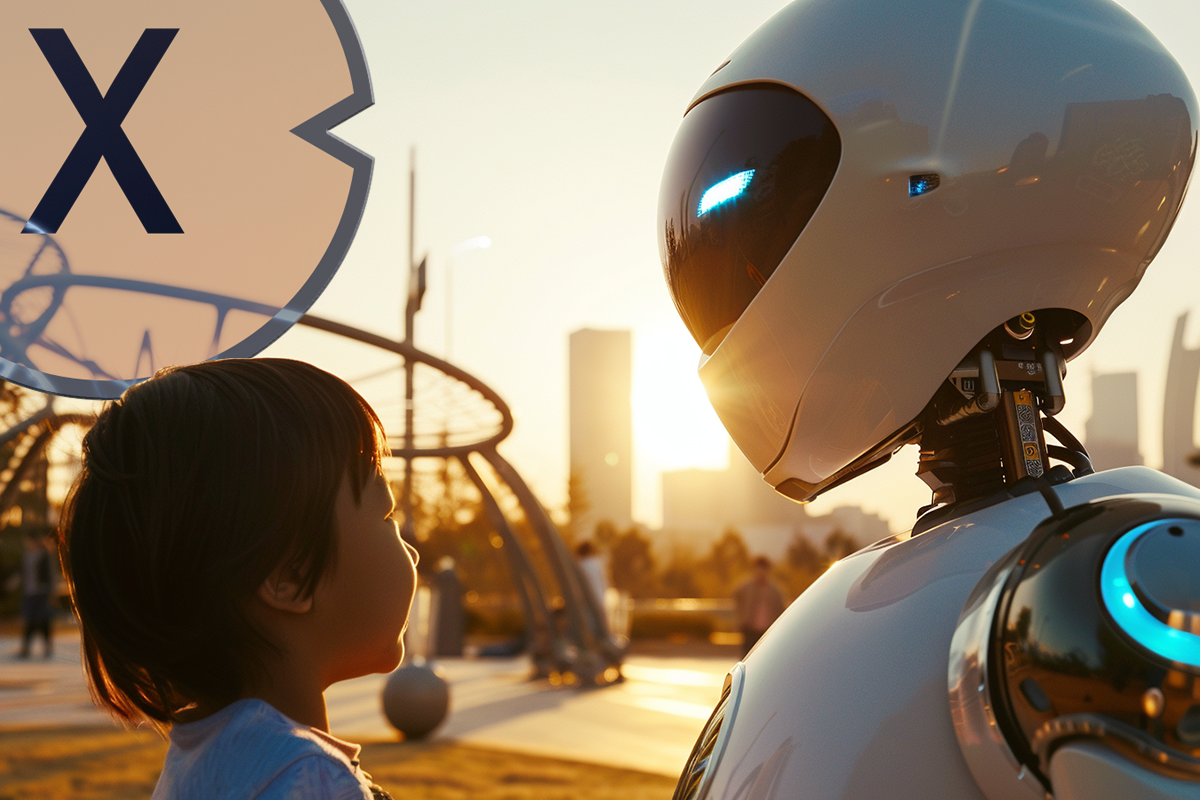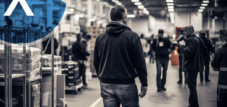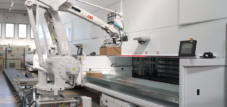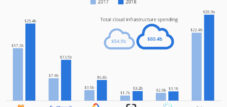South Korea plans comprehensive robot integration into industry and society - $2.2 billion for robot technology by 2030
Language selection 📢
Published on: October 22, 2024 / Update from: October 22, 2024 - Author: Konrad Wolfenstein
🚀💡 South Korea's vision: robotics for demographic and economic challenges
🚀 Massive investments and ambitious goals
South Korea has laid out an ambitious and comprehensive plan that sees robotics as the key to tackling pressing social and economic challenges. This plan is part of the country's long-term strategy to not only address demographic change - an aging population and a declining birth rate - but also to support skills shortages and economic growth. The government has recognized that robotics can play a central role in leading South Korea into a new era of technological advancement and economic prosperity.
🤝 Solving demographic challenges
South Korea is investing significant financial resources in its robotics industry. By 2030, the government plans to distribute one million robots across the country. These robots are expected to be used in various sectors including healthcare, manufacturing, hospitality and even the service sector. To achieve these ambitious goals, the government has committed $2.3 billion in investments. These funds will be used to not only develop and deploy robots, but also to build the infrastructure and expertise necessary to operate these robots.
Suitable for:
💼 Supporting the economy and promoting startups
Demographic change is one of the biggest challenges facing South Korea. The country's population is aging rapidly while the birth rate continues to decline. This is leading to a decline in the working population and increasing pressure on social systems, particularly in the areas of elderly care and healthcare. This is where robotics comes in: Robots are intended to help relieve the burden on the care and health sector and at the same time increase the efficiency and quality of care.
🌐 Technology leadership and key technologies
In addition to overcoming demographic challenges, the South Korean government also sees robotics as a new growth engine for the domestic economy. The government plans to increase the value of the domestic robot market from the current $4.2 billion to over $15 billion by 2030. This is to be achieved through a combination of government investments, the promotion of startups and the strengthening of key technologies.
🔧 Work productivity and safety
A central goal of South Korea is to achieve global technological leadership in robotics. To this end, the country is focusing on the development of key technologies that will support robotics as well as other emerging industries such as space and aviation. Robots are to be used not only in the manufacturing industry, but also in highly specialized sectors such as space technology, in order to open up new areas of application and broaden the South Korean economy.
🎓 Specialist training and education
A central concern of the South Korean government is to increase labor productivity in the country. The use of robots in various industries is intended to increase efficiency while reducing costs. This is particularly important in the manufacturing sector, where robots are capable of performing repetitive and dangerous tasks. By automating these processes, companies can reduce their production costs while increasing the safety of their employees.
🌱 Sustainability and social acceptance
In addition to developing new technologies, South Korea also attaches great importance to training specialists in the field of robotics. It is essential that qualified personnel are available to operate and further develop the new technologies. Therefore, the government plans to offer special educational programs and training for professionals specializing in the operation, maintenance and development of robots. These programs will be offered at both universities and specialized education centers to ensure there is a sufficient skilled workforce to advance the robotics industry.
📈 South Korea's strategy
Another aspect that the South Korean government takes into account in its robotics strategy is the question of social acceptance and sustainability. The use of robots could raise concerns about job security and social impacts for some people. To address these concerns, the government plans to educate the public about the benefits of robotics and make the transition to a robot-based economy socially acceptable.
South Korea's strategy to use robotics as a key technology to solve its economic and social challenges is an impressive and forward-looking plan. The country aims to become a global leader in robotics with massive investments, the promotion of startups, the development of new technologies and the training of specialists. The targeted use of robots in various areas - from healthcare to manufacturing to the service sector - is intended to increase productivity, offset labor shortages and strengthen the competitiveness of the South Korean economy.
📣 Similar topics
- 🤖 South Korea's Robot Revolution: A Look into the Future
- 💰 Investing in a robotic future
- 🏥 Solution to demographic change through robotics
- 📈 Robots as a growth engine for the economy
- 🚀 Driving innovation through key technologies
- 🛠️ Increasing work productivity through automation
- 🎓 Train skilled workers for the robot era
- 🌍 Strive for global technology leadership
- 🛍️ Service robotics in catering and retail
- 🌿 Promote sustainability and social acceptance
#️⃣ Hashtags: #Robotics #Technology #EconomicGrowth #DemographicChange #Innovation
📌 Other suitable topics
🤖 South Korea's future plan: Robotics as a growth engine 🚀
💰 Investing in the future
To achieve these goals, South Korea is investing heavily in the robot industry. By 2030, the country plans to distribute one million robots across the country. This initiative is part of a comprehensive plan aimed at achieving technology leadership on a global scale. The total investment volume amounts to an impressive $2.3 billion. These funds will go towards both the development and deployment of robots.
A public-private consortium will play a central role. This consortium will be responsible for the procurement and distribution of the robots. These include both Korean robots and collaborative robots, so-called cobots, which were specifically designed to work with people.
🚀 Robotics in emerging industries
In addition to using robots in traditional areas such as manufacturing, the South Korean government is also promoting their use in emerging industries such as space and aviation. These industries have enormous potential for growth and innovation, and the use of robotics can help set new standards and increase the competitiveness of these sectors.
Another government goal is to increase the number of service robots to 700,000 by 2030. Service robots can be used in a variety of areas, including healthcare, hospitality, and even education. They offer a variety of opportunities to improve efficiency and provide better services.
🌱 Promoting startups and small businesses
A key player in implementing this strategy is the Ministry of Small and Medium Enterprises and Startups (KOSME). This ministry plays a crucial role in supporting startups and encouraging innovation in the field of robotics. Targeted funding programs are intended to support young companies in developing new technologies and bringing them to market.
In addition, the government plans to increase to 30 the number of robotics companies with annual sales of over $75 million. This shows South Korea's commitment to not only investing in technology but also creating a thriving business environment for companies.
🔧 Development of key technologies
A central component of the plan is the development of key technologies in the field of robotics. This includes both hardware and software solutions that are necessary to develop and deploy powerful robots. The government is promoting research and development projects to ensure South Korea remains at the forefront of technological innovation.
In addition to technological development, South Korea places great emphasis on training skilled workers. The government has initiated programs to train and upskill professionals in the field of robotics. These measures are intended to ensure that there is enough qualified workforce available to meet the growing need for robotics solutions.
🏥 Use of robots in healthcare and gastronomy
The plan calls for 300,000 robots to be used in the nursing and healthcare sectors as well as in the catering industry by 2030. In healthcare, for example, robots can support patient care or take on administrative tasks. This relieves the burden on medical staff and enables better care for patients.
In the hospitality industry, robots can help improve service while increasing efficiency. They can take on tasks such as serving food or cleaning tables, which leaves employees more time for other tasks.
📈 Increase work productivity
A central goal of the South Korean plan is to increase labor productivity through the use of robots. Automation allows many repetitive tasks to be completed more efficiently, ultimately leading to higher productivity. At the same time, the use of robots helps reduce workplace accidents because they can take on dangerous or physically demanding tasks.
The South Korean government is convinced that these measures will not only help solve current challenges, but can also promote long-term economic growth. Through the strategic use of robotics, South Korea aims to further expand its position as a leading technology center while ensuring sustainable development.
Overall, South Korea's ambitious plan to advance robotics demonstrates a deep understanding of the challenges and opportunities of our time. Through targeted investments in technology and education, the country is creating a solid foundation for future growth and innovation in an increasingly automated world.
📣 Similar topics
- 🤖 South Korea's Robotics Strategy: A Plan for the Future
- 🏭 Investing in the Robotics Industry – A Look at Plans for 2030
- 🚀 Robotics and Emerging Industries: South Korea's Path to New Standards
- 📈 Support for startups: South Korea's innovation engine
- 🛠️ Development of key technologies: The future in focus
- 🏥 Robotics in healthcare: More efficiency and better care
- 🍽️ Service robots in the catering industry: Improved services by 2030
- 📊 Increasing labor productivity: South Korea's automation strategy
- 🤝 Public and private partnerships: Together for technology leadership
- 🧑🔧 Training skilled workers: South Korea's investment in the future
#️⃣ Hashtags: #Robotics #South Korea #Technology #Innovation #Automation
We are there for you - advice - planning - implementation - project management
☑️ Industry expert, here with his own Xpert.Digital industry hub with over 2,500 specialist articles
I would be happy to serve as your personal advisor.
You can contact me by filling out the contact form below or simply call me on +49 89 89 674 804 (Munich) .
I'm looking forward to our joint project.
Xpert.Digital - Konrad Wolfenstein
Xpert.Digital is a hub for industry with a focus on digitalization, mechanical engineering, logistics/intralogistics and photovoltaics.
With our 360° business development solution, we support well-known companies from new business to after sales.
Market intelligence, smarketing, marketing automation, content development, PR, mail campaigns, personalized social media and lead nurturing are part of our digital tools.
You can find out more at: www.xpert.digital - www.xpert.solar - www.xpert.plus
































